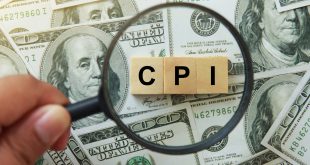The US CPI report for June 2024 is expected to be released at 8:30am ET on Wednesday, June 12, 2024. Traders and economists expect the report to hold steady at 3.4% y/y on a headline basis, with the “Core” reading expected to fall to 3.5% y/y. The Federal Reserve’s aspirations for a summer interest rate cut are on life support, and even a pre-election reduction in September is looking questionable.
This week’s US CPI report is unlikely to have an immediate impact on monetary policy but will still shape the Fed’s longer-term progress toward achieving its dual mandate.
The year-over-year measure of US CPI has flatlined around 3.4% for the better part of a year now, and one of the best leading indicators for future CPI readings, the ISM PMI Prices component, has stopped falling and may be turning higher again. The “Prices” component of the PMI reports has remained in the mid- to upper-50 region, corresponding to CPI inflation holding steady its same 3-4% range.
The other key component to watch when it comes to US CPI is the so-called “base effects,” or the influence that the reference period (in this case, 12 months) has on the overall figure. Last May’s 0.1% m/m reading will drop out of the annual calculation after this week’s reading, opening the door for an uptick in the headline year-over-year CPI reading. The base effect for Core CPI may have the opposite effect, with a 0.4% m/m reading dropping out of the relevant range.
USD/JPY’s year-to-date uptrends remain intact after a bounce from support in the 155.00 area last week. This month’s CPI reading may have a more limited impact on the pair than most, but as long as it comes in at or especially better than expectations, USD/JPY could extend its rally toward 158.00 resistance next.
The equity markets have not made significant adjustments to their rate cuts in 2024, as bond and currency markets have already adjusted and priced in fewer rate cuts. However, JPMorgan and Citigroup have moved their first-rate cutback from July, while Wall Street analysts are still predicting a Fed Funds Rate of 4.75% by the end of this year.
The equity market does care about rate cuts, as the advance has slowed materially in recent months, and the Nvidia-less Dow and Russell tell a different tale than the S&P 500 and Nasdaq 100. After this week, even fewer sell-side analysts will be seeing rate cuts, as the median dots were almost split between two and three rate cuts in March and are likely to be split between 0 and 1 rate cuts in June, with the longer-term run rate likely to move higher.
The job report and hot wage data call into question where monetary policy is, as the unemployment rate was 3.96% in May, and the household survey is always very volatile. The CPI rate is 2%, but the trend in employment overall is solid and inconsistent with 2% inflation, with wage growth at 4.1% and productivity at 0.2% in the first quarter. Even if the CPI prints at 0.1% on the headline this month, nearly six months of 0.1% and 0.2% readings are needed to beat inflation, which is unlikely to happen anytime soon.
A giant cup-and-handle pattern suggests that the 2-year rate is heading much higher and could surpass the highs it saw in October 2023 at around 5.25%. The USD/CAD broke out to the upside on Friday, and if this break out sticks and moves back to and tests that 1.385 level, it would likely come in conjunction with equity prices moving lower.
The S&P 500 has reached the 100% extension off the lows witnessed in March 2023 and appears to have formed an ending diagonal triangle. If the 2-year breaks out to the upside and the USD/CAD moves higher, it seems like the odds for a significant pullback in the S&P 500 could happen, finally.

 Noor Trends News, Technical Analysis, Educational Tools and Recommendations
Noor Trends News, Technical Analysis, Educational Tools and Recommendations




